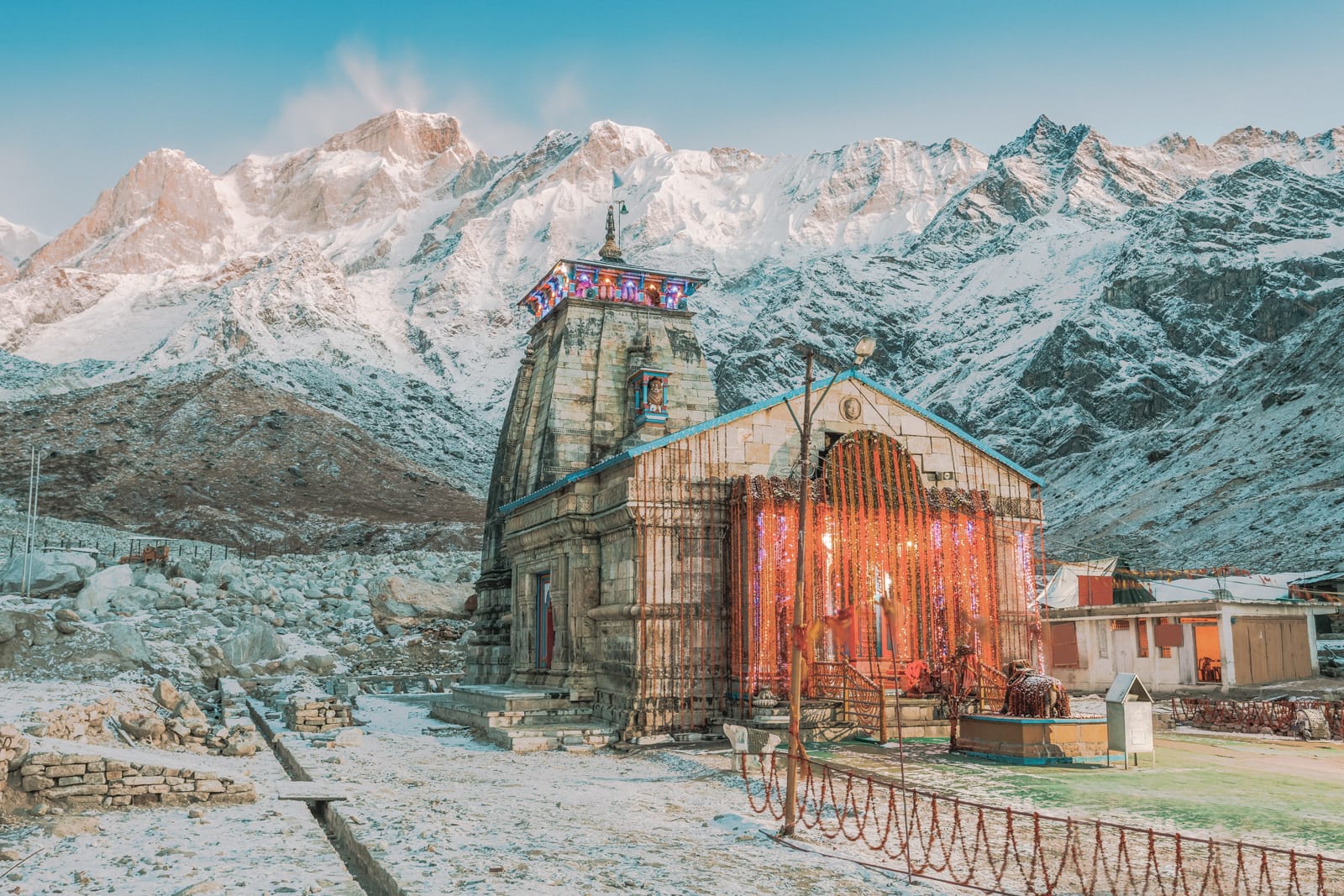Summary
10 Famous Temples in India to Explore
India is a country of immense beauty and diversity, renowned for its numerous famous temples scattered across its vast landscape. From picturesque mountain passes and remote jungles to bustling urban centers, this country is filled with remarkable sites to explore. Furthermore, its temples embody some of the most significant spiritual heritage and architectural wonders you must experience during your visit.

If you possess a passion for immersing yourself in local culture and history, a journey through India offers unparalleled opportunities to connect with its rich heritage. These stunning temples are not only architectural marvels but also count among the holiest sites in the country.
1.) Badrinath

Located in the Uttarakhand region of the Himalayas, Badrinath is among the most revered temples in India dedicated to Lord Vishnu. It is one of the four Char Dhams, representing the North. Perched at an elevation of 10,248 feet (3,133 m), this temple is accessible only during the summer months due to its high altitude and harsh winter conditions.
2.) Rameshwaram/Ramanathaswamy

As another of the Char Dhams, Rameshwaram, also known as Ramanathaswamy, symbolizes the South. Situated on an island between India and Sri Lanka in Tamil Nadu, this temple features multiple shrines and is dedicated to the deity Shiva. Originally a humble thatched structure, this site now welcomes thousands of visitors each year.

This temple offers a unique cultural experience and is ideally paired with visits to southern regions of India or even the breathtaking landscapes of Sri Lanka.
3.) Jagannath

The Jagannath Temple in Puri, located along India’s eastern coastline, is the third of the Char Dhams. Representing the East, this temple faces the Bay of Bengal and venerates Lord Krishna. Access to the temple is exclusive to Hindus, yet non-Hindu visitors can view this notable site from a distance.
4.) Dwarkadhish

Dwarkadhish Temple, found in Dwarka on the Arabian Sea, is the fourth of the Char Dhams, representing the West. This temple is dedicated to Krishna and features a distinguished 56-step entrance leading to the sanctuary. Dating back to 400 B.C., the temple is set near the tranquil Gomti River, making it an idyllic location, especially at sunset.
5.) Sri Virupaksha

Found in the village of Hampi, the Sri Virupaksha Temple is recognized as a UNESCO World Heritage Site, along with many other historical structures in the vicinity. Hampi was once the capital of the Vijayanagara Empire from 1336 to 1570 A.D., and this temple showcases stunning architecture that reflects its glorious past.
6.) Brahmaji Temple
In northwestern India lies Pushkar, home to a sacred lake and one of the few temples dedicated to Brahma. Various legends explain the disparity in the number of temples dedicated to Vishnu and Shiva compared to Brahma, suggesting that Brahma being the ‘creator’ had finished his work, while other deities continue to play a significant role.

Fortunately, the temple in Pushkar offers everyone the opportunity to engage with the legacy of Brahma, despite the scarcity of his temples.
7.) Kedarnath

This venerated temple is located in the Himalayan region of Uttarakhand. Kedarnath is considered an essential pilgrimage site for devotees of Lord Shiva and is situated at 11,755 feet (3,583 m) above sea level. The temple is often difficult to access in winter, necessitating visits during the summer months, which require an 8-mile (14 km) trek through the mountains.
8.) Kashi Vishwanath

The city of Varanasi is regarded as the spiritual capital of India, attracting countless visitors to bathe in the healing waters of the River Ganges. Among the ancient cities, Varanasi is one of the oldest, with roots tracing back to the 11th century B.C. A visit to the Kashi Vishwanath Temple is believed to lead to Moksha or liberation from the cycle of rebirth.
9.) Lingaraja

Located in Odisha, Lingaraja Temple ranks as the oldest and largest temple in the Temple City of India. It is dedicated to both Shiva and Vishnu, a union referred to as Harihara. Visitors can also explore Lake Bindu Sagar, believed to harbor healing properties and situated behind the temple.
10.) Amarnath Cave Temple

Nestled within the snowy Himalayas of northern India, the Amarnath Cave Temple is accessible primarily during the summer months. Being approximately 5,000 years old, the pilgrimage to this revered site usually spans 40 miles (64 km) and can extend over five days, presenting a daunting challenge for participants.





